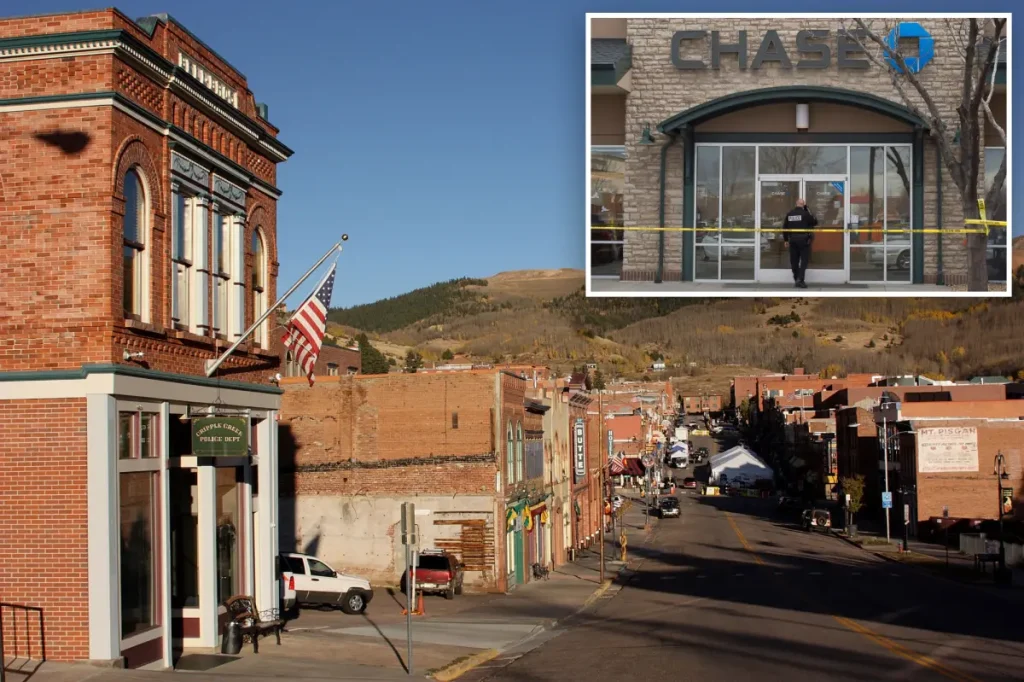Colorado’s Persistent Bank Robbery Problem: A Growing Concern for Financial Institutions
Colorado remains among the nation’s leaders in bank robberies, despite a national decline in recent years. With 104 reported incidents in 2023, the state ranked third behind only California and Illinois, continuing a troubling pattern that has banking officials concerned about a potential resurgence. Jenifer Waller, CEO and president of the Colorado Bankers Association, notes this unfortunate distinction isn’t new: “Colorado, unfortunately, has always been high in robbery. We compete with California and a few other states for the number one position.” While robberies decreased from a high of 191 in 2021, recent months have shown what Waller describes as a “slight uptick” that has financial institutions on alert. The persistence of these crimes raises questions about Colorado’s unique vulnerabilities and what can be done to address them.
A recent armed robbery at an Aurora BMO Bank branch highlights how quickly these incidents can escalate. On September 24, a man entered the bank, approached a teller’s counter, pulled a gun, and demanded money before fleeing with approximately $1,000. Aurora police later identified and arrested 41-year-old Matthew Procella without incident, aided by license plate reader technology. While the Aurora Police Department reports overall robbery rates in the city have decreased by 36.3% year-to-date, with a corresponding 40% increase in arrests, the banking sector continues to face specific challenges. When asked about potential causes for Colorado’s high robbery rates, Waller offered thoughtful but inconclusive theories: “I’ve often questioned if the easy access to highways and interstates doesn’t aid in bank robberies here. But I don’t have a solid answer. It could also be a downturn economically that motivates it — we have seen that in the past.”
In response to these ongoing threats, Colorado’s financial institutions have implemented multiple security enhancements, many of which were initially adopted during the pandemic and have since become permanent features. “Banks are very proactive. Our number one priority is ensuring the safety of our customers and employees in any robbery situation,” Waller explained. One notable change has been controlled-access entry systems where doors remain locked until customers are screened for entry. Banks have also invested in technological deterrents including sophisticated camera systems and dye packs, while continuing to emphasize employee training. Some institutions have taken the additional step of employing armed security personnel as a visible deterrent to would-be robbers. Despite these precautions, the emotional impact on bank employees and customers remains significant, even in non-violent incidents. “Bank robbery isn’t a victimless crime,” Waller emphasized. “Those involved — employees and customers alike — experience a certain amount of stress, even if it’s just a note job.”
While the image of masked gunmen may dominate public perception of bank robbery, Waller notes that most incidents in Colorado are actually “note jobs” — non-violent robberies where perpetrators pass written demands to tellers without displaying weapons. However, the banking industry faces evolving threats beyond traditional robberies. Fraud and scams are increasing at an alarming rate, with a surprising resurgence in “old-fashioned check washing” schemes. Law enforcement has identified organized criminal networks behind many of these operations, which often exploit vulnerable individuals to cash fraudulent checks. Additionally, Colorado is beginning to experience “jugging” — a crime where individuals are targeted and robbed after making cash withdrawals, particularly when they leave bank bags visible in vehicles. This emerging threat has prompted financial institutions to launch awareness campaigns focused on situational awareness and safe handling of cash transactions.
The fight against bank robbery in Colorado benefits from strong partnerships between financial institutions and law enforcement agencies. Waller specifically praised the FBI and the Rocky Mountain Safe Streets Task Force for their collaborative approach: “The FBI is extremely helpful. The Task Force does a phenomenal job of identifying and convicting bank robbery. We’re very pleased with the support we get.” Historically, approximately 80% of bank robberies were solved within 24 months, though current statistics weren’t available. For customers who find themselves in the midst of a robbery, Waller offers clear guidance: “You just comply with the robber’s demands immediately. After the fact, write down everything you can remember without talking to anyone else so no one influences your memory. The most important thing is for a customer not to try to intervene.” This emphasis on non-confrontation aligns with law enforcement recommendations to prioritize personal safety above all else.
As Colorado’s financial institutions navigate these ongoing challenges, they continue to adapt their security strategies to address both traditional and emerging threats. The balance between accessibility for legitimate customers and deterrence for potential criminals remains delicate, requiring constant vigilance and innovation. Banks are increasingly leveraging technology not only for security but also to shift more transactions to digital platforms that eliminate physical vulnerabilities. Despite these efforts, the human element remains central to both the problem and its solution. Waller repeatedly emphasized that “customer and employee safety is our number one priority” — a principle that guides all security decisions. While Colorado may not currently top the national rankings for bank robberies, the state’s persistent placement among the leaders and the evolution of criminal tactics ensure that financial security remains a significant concern for institutions across the state. The banking industry’s continued collaboration with law enforcement, investment in security measures, and commitment to education offer the best hope for addressing these challenges in the years ahead.











